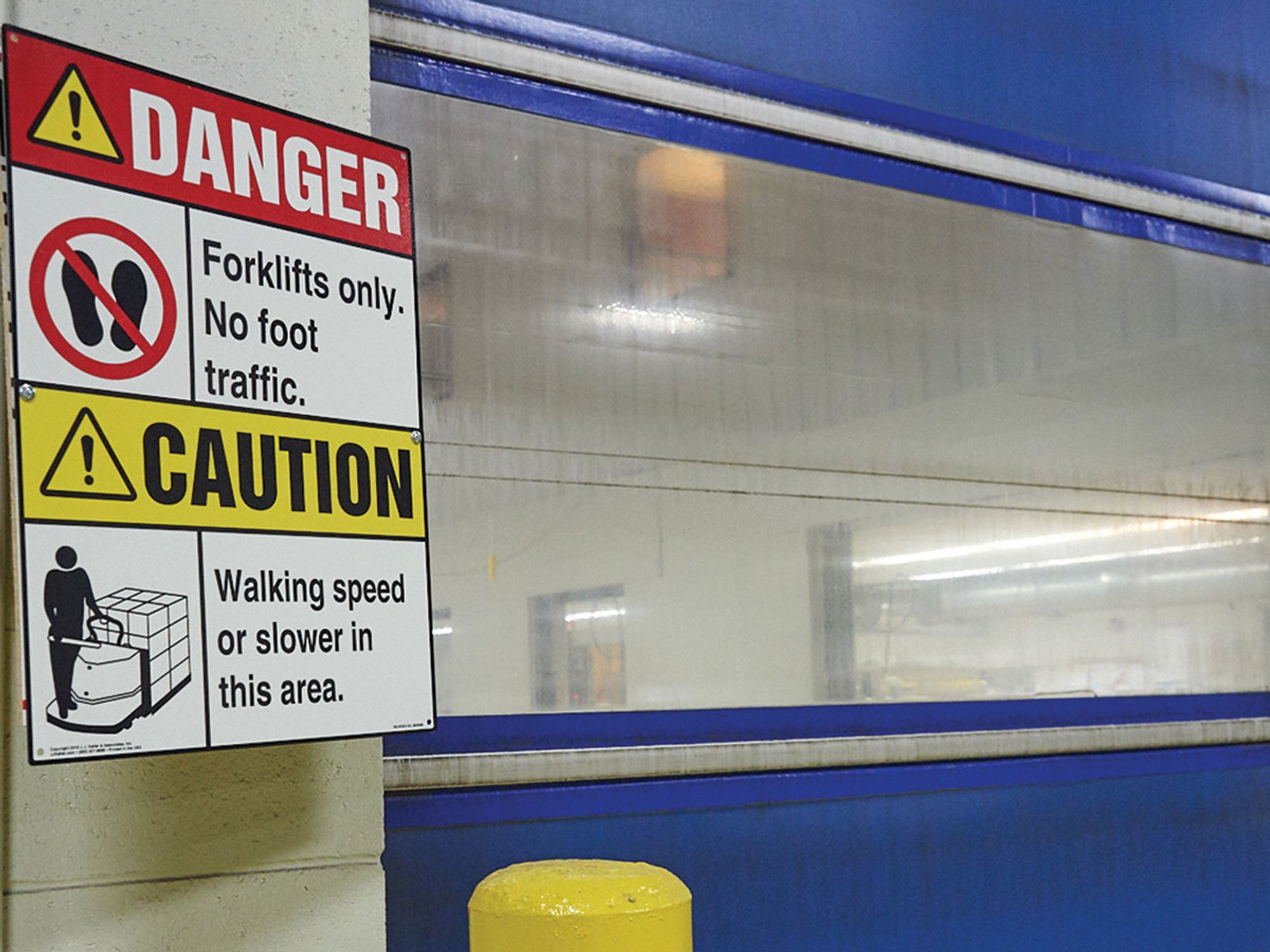Sign elements

- Safety signs are composed of one or more distinct areas called panels.
- The panels that can be included on a sign are the message, signal word, safety symbol, and directional arrow panels.
A panel is a distinct area of a sign. Safety signs are composed of one or more panels — including the message, signal word, safety symbol, and/or directional arrow panels.
Message panel
The message panel offers the basic words used to convey what the employer wants to say. Messages communicate hazards, the ramifications of disregarding hazards, prohibitions, mandatory actions, and other information.
The Occupational Safety and Health Administration (OSHA) says the message should be easily read and concise. It must be accurate in fact and contain sufficient information to be clearly understood. Finally, the agency recommends positive rather than negative suggestions, when possible.
Signal word panel
Between OSHA and American National Standards Institute (ANSI) Z535.2, there are at least eight signal words, each with a different meaning:
- DANGER — Indicates an immediate severe hazard presenting a threat of fatal or serious injury.
- WARNING — Indicates a hazard presenting a potential threat of fatal or serious injury.
- CAUTION — Indicates a potential or non-immediate minor/moderate hazard.
- NOTICE — Indicates non-hazard information, like company policies for housekeeping.
- SAFETY INSTRUCTIONS — Indicate procedures relative to safety.
- SAFETY EQUIPMENT — Indicates the location of safety equipment, such as personal protective equipment (PPE) or eyewash stations.
- FIRE EQUIPMENT — Indicates the location of fire protection equipment.
- EXIT — Indicates a way of travel to an exit discharge.
However, for general industry and shipyards, 29 CFR 1910.145 only offers three signal words — DANGER, CAUTION, and SAFETY INSTRUCTIONS (or equivalent). Still, the signal words NOTICE, SAFETY EQUIPMENT, and FIRE EQUIPMENT are likely acceptable because they are outside the “hazard” scope of 1910.145. Of course, EXIT is required at 29 CFR 1910.37. As for WARNING, evidently if you can demonstrate that following ANSI Z535.2 provides equal or greater worker protection than 1910.145, you may use that signal word per the ANSI standard and simply risk a de minimis violation from OSHA.
It turns out ANSI Z535.2 is the modern version of ANSI Z35.1-1968, which is an original source of 1910.145. According to a February 22, 2011, OSHA interpretation, employers may comply with the most current consensus standards rather than the OSHA standard if those actions provide equal or greater worker protection. OSHA acknowledges in its June 13, 2013, final rule that ANSI Z535.2-2011 provides “at least as effective protection to employees as the old ANSI standard” Z35.1-1968.
Safety symbol panel
The safety symbol panel depicts one or more graphical symbols that contribute to a sign’s meaning, overcome limitations in reading/language, and capture employees’ attention. Common hazard symbols include those for radiation, biohazard, high voltage, and no smoking.
When selecting or creating symbols for signs, the employer should be sure to review the design principles found in ANSI Z535.3, American National Standard for Criteria for Safety Symbols. Designs that are consistent with other symbols, legible from a distance, and easily understood are preferred. In addition, employers should keep symbols simple but not abstract.
If used, “surround shapes” give extra meaning to any symbol. Employers may refer to ANSI Z535.3 to learn about the equilateral triangle, circle with slash, solid circle, and solid square/rectangle surround shapes.
Directional arrow panel
Section 29 CFR 1926.200 for construction mentions directional signs, which point the employee to a way out or way to something, such as a room, fire exit, fire escape, or first aid. The directional arrow panel, with its white arrow on a black background, may be used with other sign panel types.
